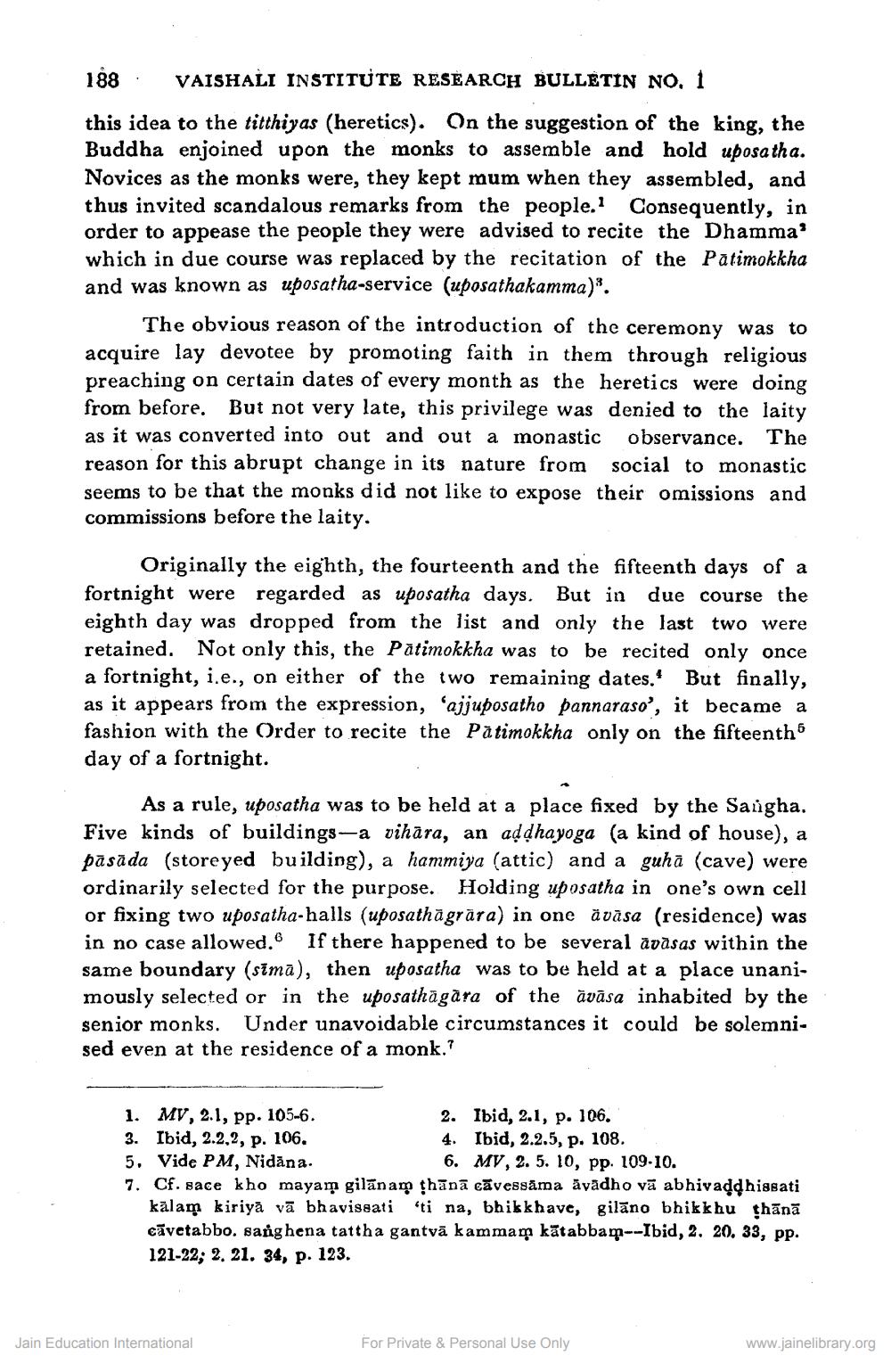________________
188.
VAISHALI INSTITUTE RESEARCH BULLETIN NO. 1
this idea to the titthiyas (heretics). On the suggestion of the king, the Buddha enjoined upon the monks to assemble and hold uposa tha. Novices as the monks were, they kept mum when they assembled, and thus invited scandalous remarks from the people. Consequently, in order to appease the people they were advised to recite the Dhamma' which in due course was replaced by the recitation of the Patimokkha and was known as uposatha-service (uposathakamma)".
The obvious reason of the introduction of the ceremony was to acquire lay devotee by promoting faith in them through religious preaching on certain dates of every month as the heretics were doing from before. But not very late, this privilege was denied to the laity as it was converted into out and out a monastic observance. The reason for this abrupt change in its nature from social to monastic seems to be that the monks did not like to expose their omissions and commissions before the laity.
Originally the eighth, the fourteenth and the fifteenth days of a fortnight were regarded as uposatha days. But in due course the eighth day was dropped from the list and only the last two were retained. Not only this, the Patimokkha was to be recited only once a fortnight, i.e., on either of the two remaining dates." But finally, as it appears from the expression, 'ajjuposatho pannaraso', it became a fashion with the Order to recite the Patimokkha only on the fifteenth day of a fortnight.
As a rule, uposatha was to be held at a place fixed by the Saigha. Five kinds of buildings-a vihāra, an addhayoga (a kind of house), a pāsāda (storeyed building), a hammiya (attic) and a guha (cave) were ordinarily selected for the purpose. Holding uposatha in one's own cell or fixing two uposatha-halls (uposathāgrāra) in one ävāsa (residence) was in no case allowed. If there happened to be several avāsas within the same boundary (sima), then uposatha was to be held at a place unanimously selected or in the uposathāgāra of the avāsa inhabited by the senior monks. Under unavoidable circumstances it could be solemnised even at the residence of a monk.?
1. MV, 2.1, pp. 105-6.
2. Ibid, 2.1, p. 106. 3. Ibid, 2.2.2, p. 106.
4. Ibid, 2.2.5, p. 108. 5. Vide PM, Nidāna.
6. MV, 2. 5. 10, pp. 109.10. 7. Cf.sace k ho mayam gilānam thānā cāvessāma avadho vā abhivaddhissati
kalam kiriyā vā bhavissati "ti na, bhikkhave, gilāno bhikkhu thānā cāvetabbo. sarighena tattha gantvā kammam kātabbam--Ibid, 2, 20, 33, pp. 121-22; 2. 21. 34, p. 123.
Jain Education International
For Private & Personal Use Only
www.jainelibrary.org




